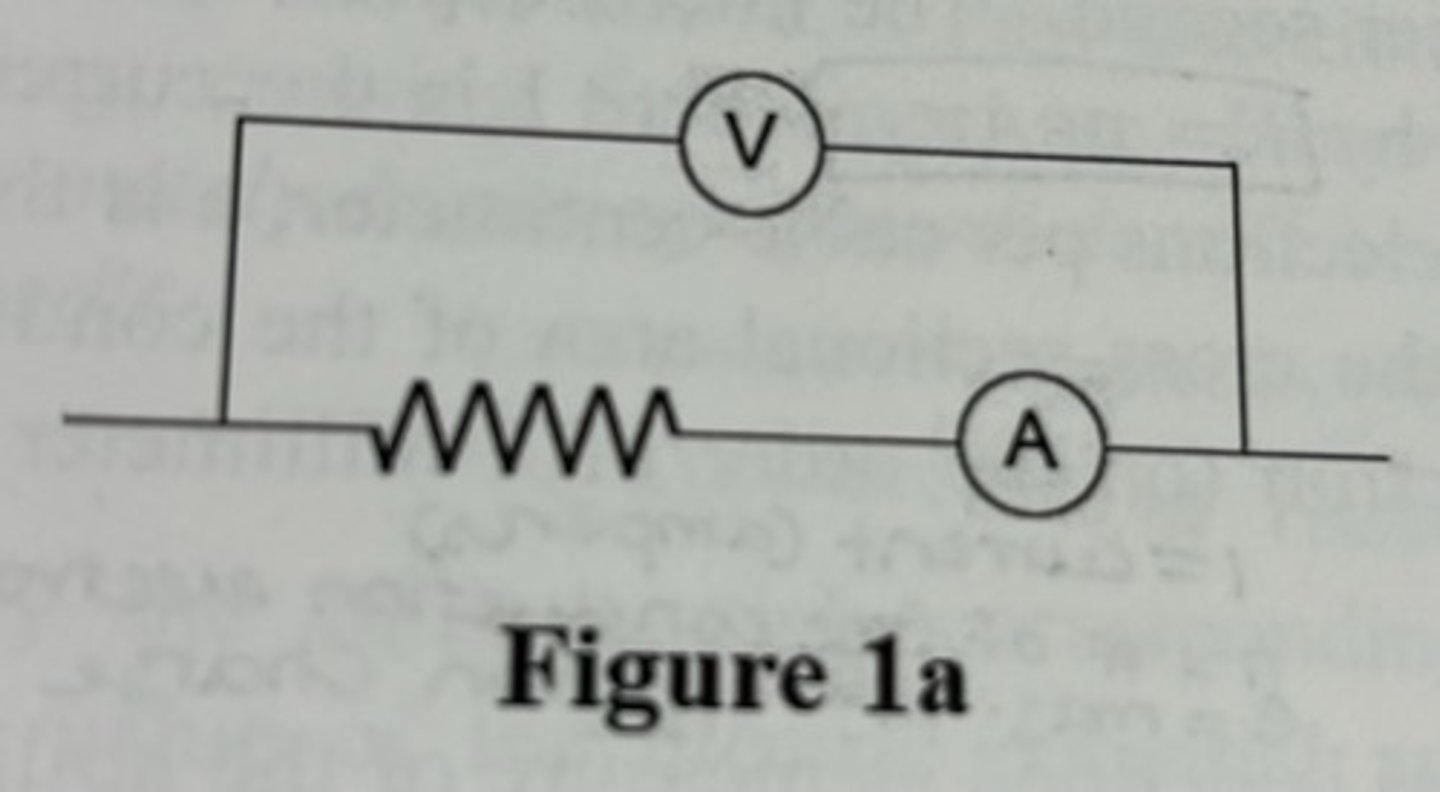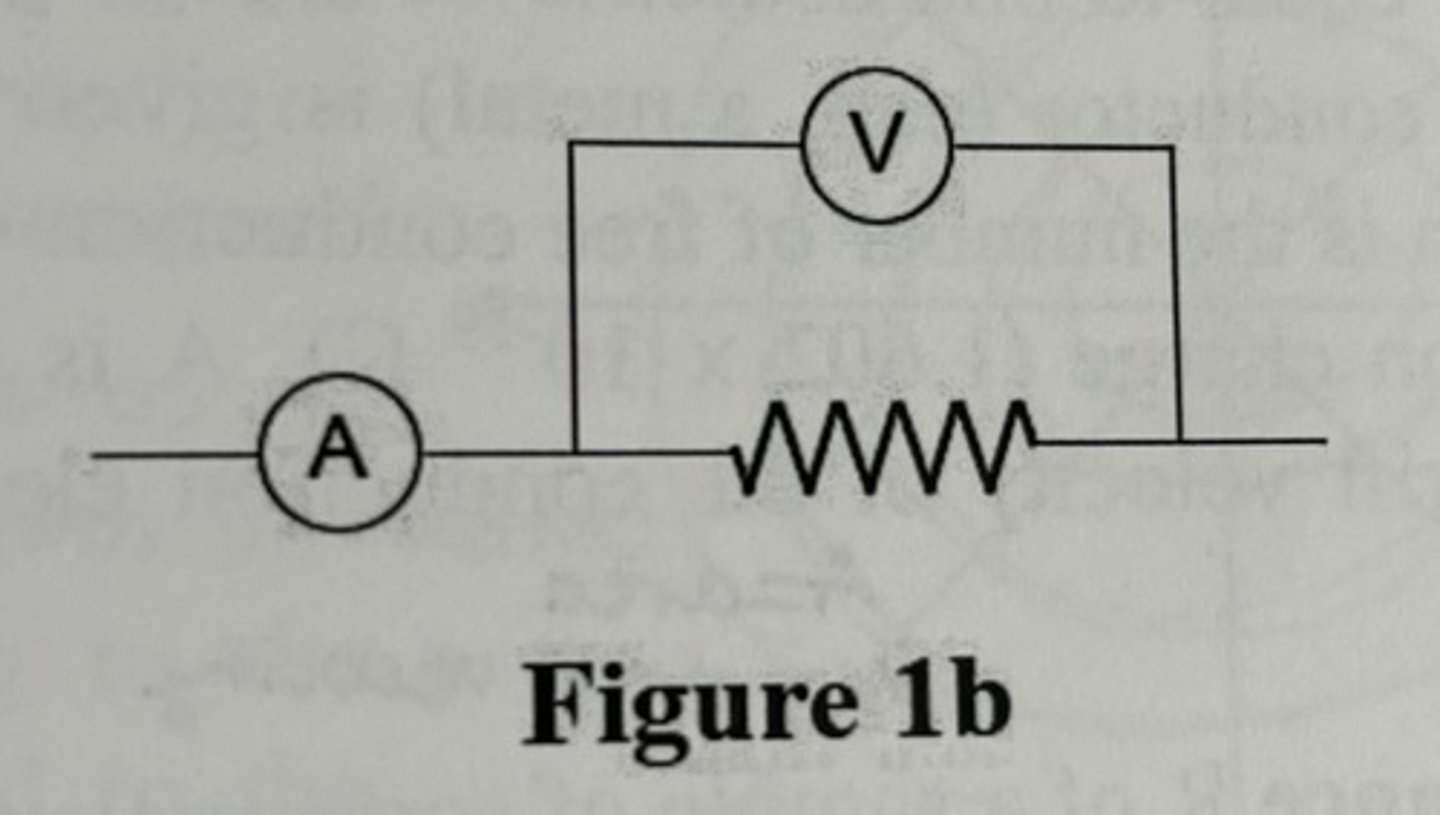Physics 2 Lab Final - Lab 3 Ohm's Law
1/36
There's no tags or description
Looks like no tags are added yet.
Name | Mastery | Learn | Test | Matching | Spaced |
|---|
No study sessions yet.
37 Terms
According to ohm's law, the current going through a material is ____________ to the voltage across a particular section
proportional
The proportionality constant is the __________ of the material
resistance
What is the formula for Ohm's law?
v=ir
What is power?
the rate at which energy is transformed or transferred
How do we calculate power?
p = I|∆V| = I^2(R)
How do we calculate slope with minimal uncertainty?
use two points on the line of best fit that is WIDELY separated and makes a large right triangle with the two points on the line of best fit. determine the horizontal scale used to plot the data. convert measurement with the correct scale.
When drawing or graph for current vs. voltage, the slope is what quantity? (hint: manipulate ohm's law to determine which quantity that the slope would resemble).
resistance
what is an electrical circuit?
a means of transferring energy from one point to another or converting it from one form to another. the principle of energy conservation governs every energy transformation and transfer that occurs in an electrical circuit.
what is an emf?
electromotive force
what makes something a source of emf?
a source of emf is any device which produces a separation of positive and negative charges at the expense of some non-electrical form of energy
what is the SI unit of emf?
the volt (V); one volt equals one joule of energy per one coulomb of charge.
what is potential difference?
the amount of energy dissipated per coulomb of charge flowing in the conductor is called the potential difference between two points.
when charge flows from one point to another in a conducting path, what happens to energy?
energy is frequently dissipated from the system in the form of heat and/or light.
what is an electric current?
the net flow of charged particles in a circuit.
what is the SI unit of electrical current?
the ampere (A); one ampere is equal to one coulomb of charge per second.
what does 'e' stand for?
the magnitude of electron charge (1.602E-19 C)
what is resistance?
the resistance of a sample of some material is defined as the measure of the ability of current to flow through a material at a specific voltage.
what does a material's resistance depend on?
the material itself and the shape and size of the sample as well as the temperature.
what is the SI unit of resistance (R)?
the SI unit for resistance is the ohm which is equal to one volt per one ampere.
what was the purpose of Lab 3: Electric Circuits Part One; Ohm's Law?
to observe he current as the voltage is increased dr resistors of various resistance to test the integrity of Ohm's Law.
to examine power in electrical circuits
what is the SI unit for power?
the watt (W); one watt is equal to one joule of energy per second
What can we learn from power in the context of an electrical circuit?
in the context of electrical circuits, power is the rate at which electrical energy is supplied to a circuit source of emf and also the rate at which electrical energy is consumed or dissipated by a circuit element.
how do we measure the resistance of a circuit element?
we must measure the potential difference across the element and the resulting current that flows in the circuit element.
how is current measured in a circuit element?
current is measured by breaking down the circuit and inserting an ammeter in series with the element
how do we measure the potential difference in a circuit element?
a voltmeter is used in parallel with the circuit element
what is an ideal ammeter?
an ammeter with no resistance (measures current across a resistor)
what is an ideal voltmeter?
a voltmeter with infinite resistance.
why do we want to use an ideal ammeter and voltmeter? (hint the ammeter would have zero resistance and the voltmeter would have infinite resistance)
by using these ideal circuit instruments, there would not be a change in the current and potential difference of the original circuit.
t or f: the way an ammeter and voltmeter are inserted into a circuit can impact your current and voltage measurements
true
figure 1A depicts an ammeter inserted in series with a resistor and a voltmeter placed in parallel with the series connection of the resistor and ammeter. Although the ammeter DOES measure the current flowing in a resistor, the voltmeter measures the voltage drop across BOTH the ammeter and resistor together, not just the resistor alone.
how would you describe this circuit diagram and its components with respect with one another (hint: the ammeter is in series/parallel with the voltmeter/resistor).

figure 1B depicts a circuit in which the voltmeter is in parallel with the resistor and the ammeter is inserted in series with the parallel combination. Although the voltmeter does measure the potential across the resistor, the ammeter measures the current in BOTH the voltmeter and resistor.
how would you describe this circuit diagram and its components with respect to one another (hint: the ammeter is in series/parallel with the voltmeter/resistor).

what do figures 1A and B tell us about the nature of circuits?
it is impossible to simultaneously measure the current in a resistor alone and the potential difference across the resistor alone with these instruments (only if these instruments were ideal instruments would the two sets of readings agree exactly).
f
Which of the pictures above is the correct representation for measuring voltage across a resistor? (hint: should it be in parallel or in series with the resistor?)

d
Which of the pictures above is the CORRECT representation for measuring the current through a resistor?

964.7 ohms
Given the graph above, the resistance for the resistor is?

Calculate the power dissipated by the resistor when the current is .016 A.
.247 W